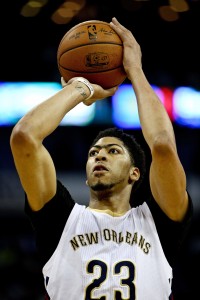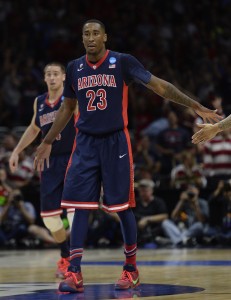The Bird exception, named after Larry Bird, is a rule included in the NBA’s Collective Bargaining Agreement that allows teams to go over the salary cap to re-sign their own players. A player who qualifies for the Bird exception, formally referred to as a Qualifying Veteran Free Agent, is said to have “Bird rights.”
The most basic way for a player to earn Bird rights is to play for the same team for at least three seasons, either on a multiyear deal or separate one-year contracts. Still, there are other, more complicated criteria. A player retains his Bird rights in the following scenarios:
- He changes teams via trade. For instance, Alexey Shved is in the third year of his contract. He has been traded three times since August, from the Timberwolves to the Sixers, the Sixers to the Rockets and the Rockets to the Knicks, but he still has his Bird rights because he hasn’t been waived.
- He finishes a third season with a team after having only signed for a partial season with the club in the first year. If Chris Andersen‘s contract were expiring at season’s end, he would have Bird rights this summer, even though he joined the Heat on a 10-day contract in 2012/13.
- He signed for a full season in year one or two but the team waived him, he cleared waivers, and didn’t sign with another team before re-signing with the club for a third year and remaining under contract through the season. If the Hornets re-sign Jannero Pargo this summer and he remains with the team for all of 2015/16, he’ll have Bird rights even though he cleared waivers from the team earlier this season.
However, a player sees the clock on his Bird rights reset to zero in the following scenarios:
- He changes teams via free agency.
- He is waived and is not claimed on waivers (except as in scenario No. 3 above).
- His rights are renounced by his team. However, his Bird rights are restored if he re-signs with that team without having signed with another NBA team. The Hornets renounced Pargo’s rights in 2013 and 2014, but he’d still be in line to become a Bird player in the summer of 2016.
- He is selected in an expansion draft.
If a player is waived and claimed off waivers, and he would have been in line for Bird rights at the end of the season, he would retain only Early Bird rights, unless he was waived via the amnesty provision.
When players earn Bird rights, they’re eligible to sign maximum-salary contracts for up to five years with 7.5% annual raises when they become free agents. The maximum salary will vary for each player depending on how long he’s been in the league, but regardless of the amount, a team can exceed the salary cap to complete the deal.
Although the Bird exception allows teams to exceed the cap, a team cannot necessarily use free cap room to sign free agents and then re-sign its own players via Bird rights. A team with a Bird free agent is assigned a “free agent amount” or cap hold worth either 190% of his previous salary (for a player with a below-average salary) or 150% of his previous salary (for an above-average salary), up to the maximum salary amount. For players coming off rookie scale contracts, the amounts of those cap holds are 250% and 200%, respectively.
The Trail Blazers, for instance, will have a cap hold of nearly $10.868MM for Wesley Matthews on their 2015/16 books — 150% of his more than $8.775MM salary this season. Portland could renounce Matthews and clear that $10.868MM in cap space, but the Blazers would lose his Bird rights if they did that. That would force them to use either cap room or a different cap exception to re-sign him.
Ultimately, the Bird exception was designed to allow teams to keep their best players. The CBA ensures that teams are always able to re-sign them to contracts up to the maximum salary, assuming the player is interested in returning and his team is willing to go over the cap.
Note: This is a Hoops Rumors Glossary entry. Our glossary posts will explain specific rules relating to trades, free agency, or other aspects of the NBA’s Collective Bargaining Agreement. Larry Coon’s Salary Cap FAQ was used in the creation of this post.
Versions of this post were initially published on April 17th, 2012, and May 2, 2013, and April 24th, 2014.


